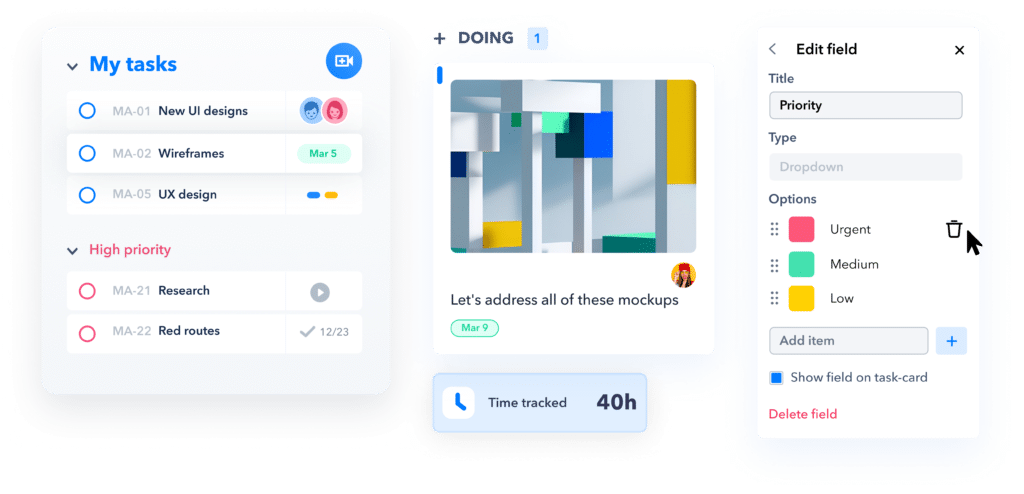All successful organizations have productive and cohesive teams. They understand that no matter how talented and inspired individuals might be, it’s their performance as a team that matters. These companies know the importance of setting team goals and evaluating performance because collective outputs far outweigh individual efforts.
Setting team goals helps the firm agree on a larger vision. It brings together individuals to work toward an objective that’s greater than themselves. In this guide, we define team goals, discuss their benefits, the best ways to set them, how to measure team performance, and share some best practices for setting team goals.

What are team goals?
Productivity literature has primarily focused on individuals. There are proven rules and time-tested principles on how individuals can set goals, improve productivity and output, and manage time. But there hasn’t been enough focus on setting team goals.
Team goals are objectives that need the contributions of all the individuals on a team. These are different from individual goals that people would set for themselves. Team goals are co-created with suggestions from the team members to ensure that there is an alignment between their capabilities and the requirements of the goals.
Setting team goals is important for increasing collaboration, engagement, accountability, and productivity. They don’t just benefit teams or their members but the company as a whole.
The benefits of setting team goals
If you want to improve your team management, you need to focus on setting team goals because they offer the following benefits:
-
- Understanding: Team goals allow individuals to know how their work aligns with the objectives of the organization.
- Clarity: Team members will have clarity on their collective objectives and individual responsibilities regarding the overall goals.
- Accountability: Both as teams and as individuals, there will be greater accountability and ownership.
- Collaboration: Team goals foster better collaboration and increase trust within teams.
- Growth: With better awareness of goals and resources, there will be more formalized opportunities for training, up-skilling, and re-skilling.
- Optimization: Assigning team goals will unearth overlooked opportunities within the team.
- Evaluation: Team goals make it easy to track and evaluate the performance of teams and their members.
SMART goal setting for teams
The SMART framework has proven parameters to increase the effectiveness and productivity of goals. SMART stands for Specific, Measurable, Attainable, Relevant, and Time-Bound.
The framework has been widely used in organizations because it optimizes resource allocation, increases domain alignment, and delivers projects within the specified timelines. For setting team goals, SMART can be used in the following way:
-
- Specific: The team goal should be specific and clearly understood by all team members. Everyone should know the objectives, challenges, and timeline.
- Measurable: Every goal should have metrics that track the progress of the team. These metrics should be easy to measure during all phases of the project.
- Attainable: Unrealistic goals will lead to decreased engagement. The goal should be challenging but the team should also be realistically able to achieve it.
- Relevant: What your team chooses to work on should be in alignment with the larger strategy of the organization. Early management buy-in helps with resource allocation.
- Time-bound: In setting team goals, it’s important to have a deadline along with specific target days for key deliverables.
Best practices for setting team goals
These recommendations based on the performance of successful teams will help your team work toward its goals in a cohesive and synergetic manner.
1. Know your objectives
The first step is to understand your goals and why you want to set them for your team. What’s the end result that you hope to achieve? How will the organization benefit from it? What are its implications for the company and external stakeholders? These will not only make things clearer but also make it easy to measure your performance.
2. Align goals with organizational priorities
Before constituting the team or explaining the goals to your team members, ensure that you know what the organization expects out of you and your team. To the extent possible, get it in writing from business leaders. Share the objectives and timeline with them before you start working on your project.
3. Empower people to form their goals
Once you have your team goals, give people the power to develop their individual goals. After you determine that these are in sync with the team’s goals, provide all necessary resources to help them achieve their goals. Also, state how you will track their performance for both team and individual goals.

4. Set deadlines
As a business leader or manager, one of your responsibilities is to develop accountability in the system. While setting team goals, you should have clarity on the deadline and communicate to your team members the importance of honoring it. Along with the project deadline, encourage people to stick to minor deadlines along the project timeline.
5. Measure progress on goals
Tracking the progress of your team will help them stay on course. Check if they have all the support and whether there’s any confusion regarding the project goal. Use the right technological tools for seamless communication related to specific projects. This will help you quickly solve problems and allocate resources.
6. Help team members achieve their goals
Along with giving them clarity and direction, you’re responsible for helping your team members achieve their goals. Have regular one-on-one meetings with individuals and give them the freedom to approach you regarding their problems. Encourage their initiatives and show that you’ve invested in their success.
7. Listen to your team members
On any project, your team members may have suggestions and insights based on their experience and skillsets. They may intuitively know what can be improved and what needs to be focused on. All these will come to light when you actively involve them in conversations and encourage them to contribute.
8. Create dedicated communication channels
While setting team goals, it’s important to have channels of communication specific to projects and with all team members. Meetings might be needed on certain occasions but digital communication is preferable in a majority of cases. This is another reason to use a project management tool such as Heycollab, which will give you dedicated channels plus access to key resources.
9. Don’t micromanage
While it’s important to communicate and get timely feedback, it’s equally important to give autonomy to your team members. Constantly checking on them and asking for tedious status reports will defeat the purpose of empowerment and engagement. Schedule communication to pre-determined formats and intervals and trust your team members to achieve their goals and team goals.

10. Learn from each project
After completing a project, analyze whether you met your objectives, whether team members had a clear understanding of their tasks, whether everyone met the various deadlines in the timeline, and whether they had access to resources. When setting team goals, you should continuously learn from both your successes and failures.
Evaluating performance while setting team goals
An important aspect of setting team goals is developing the right framework to track your performance and measure your success. This is how you make your system accountable and ensure that resources are optimally utilized. These are some proven tips to evaluate performance while setting team goals.
Assign responsibility
While evaluating performance, managers need to know who will be responsible for tracking what aspect of the process. There should be no confusion and no overlap. Importantly, team members shouldn’t be burdened with their individual tasks and be held responsible for measuring performance.

Choose the metrics
What data do you need to evaluate performance? Does everyone on the team know the metrics you will be using to track their progress? Is there an easy way for them to report their progress using that data? Managers should communicate to their teams the specific metrics they will use to track performance.
Check progress updates
Not all projects and teams need to have the same reporting frequency or structure. Some may need daily meetings whereas others would only require emails. As a manager, you should convey how you expect to receive progress updates. But make sure that reporting doesn’t burden your team or distract them from their goals.
Use the right technology
You need a project management tool that’s easy to use and understands your category codes. The technological solution should have dedicated messaging options and give members easy access to key resources. Heycollab, for example, is built for small and medium businesses that want to simplify project management.

In short
Setting team goals and evaluating performance have always been important. But they’re particularly important during remote and hybrid work. Organizations should rethink their existing systems and analyze whether they have the right structure to deliver projects while keeping their distributed workforces inspired and engaged.
In 2016, Heycollab was born – a groundbreaking project management platform tailored for modern team collaboration.

Heycollab’s virtual workspace is your all-in-one destination for comprehensive project management needs:
- Real-time communication through instant messaging
- Streamlined task and project management with refined Kanban boards
- A central hub for collaboration and data storage
With Heycollab, teams can not only enhance their project management abilities but also increase their overall productivity and efficiency. Its seamless communication and collaboration features are designed to meet the requirements of any project.
Why get tangled in multiple tools and lose concentration?
Project management history teaches us that strategies and methodologies are no big deal – they’re already at our fingertips.
We really need to improve productivity and efficiency by empowering our team members.
Leap toward the future
Give Heycollab a try
The right technology solution can go a long way in setting team goals.
Heycollab was designed for teams like yours to improve productivity and collaboration.
Join for free and try out its cool features.

